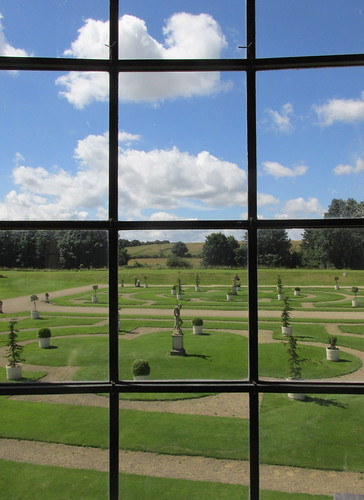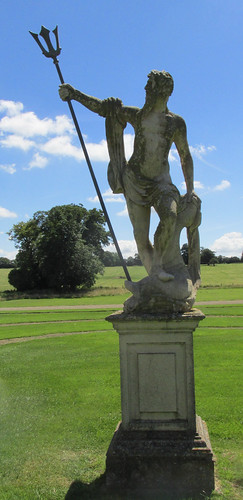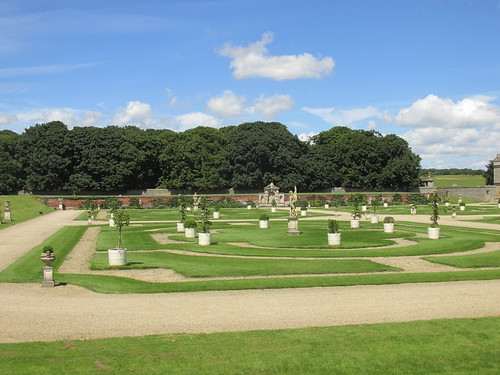That garden has been recreated by English Heritage, the current custodians of the property, but between the time of Sir Chris IV (1685 and beyond) and the 1930s, when the site was taken into state guardianship, it fell into disrepair, and eventually disappeared.
 |
| The view from the state rooms |
But in the 1980s English Heritage began an archaeological investigation under the leadership of garden historian Brian Dix. The team gathered as many clues as possible to the garden's original layout, for example considering the colours and texture of soil across the site. During the excavations a spread of bent nails was found, indicating the positions of boards used to create the geometric patterns of the lawns and paths. Coupled with written texts, the evidence allowed developers to recreate the Great Garden as closely as possible to how it would have been in the 1690s.
 |
| Statue of Neptune |
The garden is a fine example of 'cutwork', which consists of carefully manicured lawns separated by coloured gravel walkways. It is divided into four quarters or parterres. (From the French 'on the ground'.) The symmetrically-laid patterns of curves and straight lines reflect the symmetry of the house. In contrast to the pattern on the floor there are carefully positioned statues, urns, seating, topiary and other features to give height to the composition.
 |
| The mount |
 |
| The view from the mount |
In the late 17th century a garden was a definite status symbol and only a chosen few would have been invited to see it; but the design and planting were aimed at impressing them. Tantalising glimpses could be seen from the state rooms, so even those who were not escorted around the garden and shown the latest new species to be planted there would be well aware of its owner's importance.


I think a return visit is in order whilst we are still members of English Heritage. We visited in the 1980s when we lived a little closer than now and I don't remember a garden, it looks fascinating:)
ReplyDeleteLike the house the gardens are very impressive but again it's more the medieval style gardens that I prefer. I'm a bit of a spoilsport really! :)
ReplyDeleteMust be a beautiful place to visit !
ReplyDeleteWonderful that this estate has been recovered and preserved! The gardens are simple, yet elegant. Interesting about the word, 'bewilder'. I like the statue of Neptune.
ReplyDelete